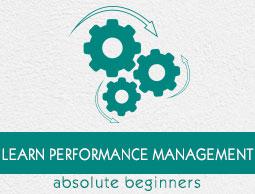Improving Performance
Improving Performance at the Organizational Level
It is tempting for managements to say that poor performance is always someone else’s fault, never theirs. But poor performance may be a result of inadequate leadership, bad management or defective systems of work. It is not necessarily the fault of employees.
The failure can be at the top of the organization because well-defined and unequivocal expectations for superior performance have not been established and followed through. And effective processes of performance management can provide a valuable means of communicating these expectations.
The Problems at Managerial Level
There are a variety of psychological mechanisms that managers sometimes use to avoid the unpleasant truth that performance gaps exist. The psychological mechanisms have been described as follows −
Evasion through rationalization
Managers may escape having to demand better performance by convincing themselves that they have done all they can to establish expectations. They overlook the possibility of obtaining greater yields from available resources.
When they do ask for more they are too ready to believe their staff when they claim that they are already overloaded, and they may weakly take in the extra work themselves. Or, they may go to the opposite extreme and threaten workers with arbitrary demands, unaccompanied by specifications of requirements and deadlines for results.
Reliance on procedures
Managers may rely on a variety of procedures, programs and systems to produce better results. Top managers say, in effect, ‘Let there be performance-related pay, or performance management’ and sit back to wait for these panaceas to do the trick – which, of course, they won’t unless they are part of a sustained effort led from the top, and are based on a vision of what needs to be done to improve performance.
Attacks that skirt the target
Managers may set tough goals and insist that they are achieved, but still fail to produce a sense of accountability in employees or provide the support required to achieve the goals.
Top Management Levers for Improving Performance
To improve organizational performance, top management needs to focus on developing a high-performance culture.
The characteristics of such a culture are −
a clear line of sight exists between the strategic aims of the organization and those of its departments and its staff at all levels;
management defines what it requires in the shape of performance improvements, sets goals for success and monitors performance to ensure that the goals are achieved;
leadership from the top that engenders a shared belief in the importance of continuous improvement;
focus on promoting positive attitude that results in a committed, motivated and engaged workforce.
The momentum for the creation of a high-performance culture has to be provided by the top management. There is a clear sense of mission underpinned by values and a culture expressing what the firm is and its relationship with its customers and employees.
Strong values provide the basis for both the management of performance and the management of change. These values have to be embedded, connected, enduring, collective and measured and managed.
The Sears Performance Model
The means by which a business achieves high performance was modelled by Sears, the retailing companies, as shown in the following figure.
This model emphasizes the importance of employee attitude and behavior in making the firm ‘a compelling place to shop’ and ultimately ‘a compelling place to invest’.




